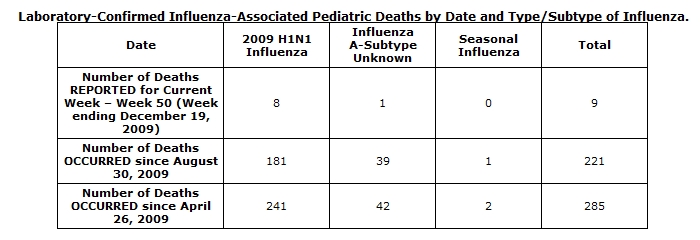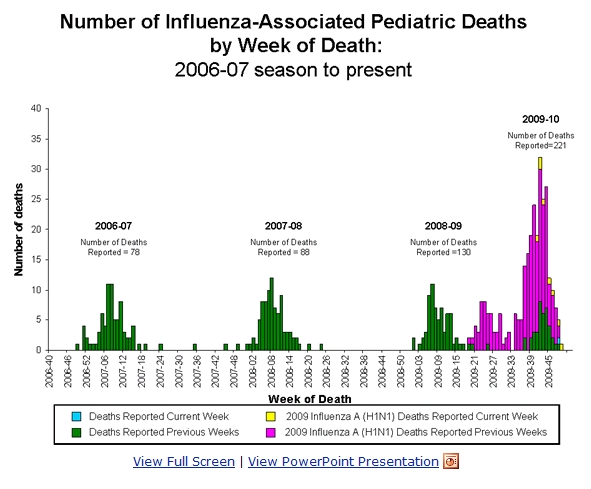Some people criticize the way in which it was responding to a pandemic caused by H1N1 influenza virus. The argument that you hear / read most often is that the new virus of seasonal influenza kills far less people. In this respect, are compared numbers, percentages and statistics that seem to prove so obvious that the H1N1 influenza is a disease that does not have to worry at all.
On this basis is then constructed opinions that have a strong taste of conspiracy and corruption in the world, so long battle horse of vaccinia. Only cares about that now people of a certain professional level seem to have taken a liking to this kind of argument. The aim is apparently to wake up in the public interest not only to their ideas, but also a sense of victimhood. People you must see in the role of David against Goliath and the stone in the sling is the total rejection of the recommendations that come from "Goliath." The refusal of vaccination to the denial of the existence of the pandemic that is even led to the denial of the existence of the pandemic in its entirety. In fact, some conspiracy theorists are already working to drastically reduce the role that the virus was in the great pandemic of 1918/19. In practice are called into question the pandemic plans that have been developed in recent years and is ferried to the suspicion that this assumption is that they are a colossal fraud, developed along with Big Pharma.
We hours a zoom on one of the basic arguments of conspiracy theorists, the difference in mortality between pandemic flu and seasonal.
On 22 December 2009 the WHO web site was published briefing that explains the difference in the mortality data of the two types of flu that we currently have available and because it can be misleading to compare them as equals.
mortality figures are estimates due to seasonal influenza, while the number of deaths directly related to the pandemic virus are the cases confirmed by laboratories. Obviously, to compare estimates with confirmed dead can never give a valid result.
Estimates of the dead that the influence because during an outbreak are processed statistically and in practice it is the so-called excess mortality from all causes occurring during an influenza epidemic. That is, in a given month of the year die on average a certain number of people, when influenza virus is not circulating in a certain country. This number is statistically "expected". If during that month, there is an influenza epidemic, the mortality rate that exceeds this threshold is referred to as "excess mortality". This phenomenon is observed for many decades allows estimate how many people died from influenza.
But because you can not determine the number of deaths influence just from death certificates?
The WHO says:
"During seasonal influenza epidemics of ca. 90% of elderly deaths regards weakened suffering from one or more chronic diseases. Although the flu can worsen these diseases and contribute to the death, in most cases will not do any virological test and is used to attribute the disease prior to death. To capture these deaths caused by influenza, which otherwise would never be to our knowledge, in the 19th century methods have been introduced to estimate the 'excess mortality. These estimates have helped to counter the hypothesis that influenza is a mild disease that causes only a few dead. "
The number of deaths from pandemic influenza that are reported are only deaths confirmed by laboratory tests, so these are estimates. For various reasons these numbers can not give the full picture of mortality during the pandemic is undoubtedly higher.
often laboratory tests are not done, especially in developing countries, also because they are complex and expensive.
Add to this the fact that when the test confirms the presence of H1N1 virus in patients with pre-existing diseases, many doctors write the death certificate and not the chronic disease pandemic virus as a primary cause. These cases are missing in official statistics.
recent studies have showed that some tests for the H1N1 virus are not completely reliable and false-negative results are a frequent problem. The accuracy of the test also depends on the manner in which samples are taken.
Many third world countries are deprived of reliable systems for recording personal data, therefore, in most of the dead, missing death certificates.
Another reason why comparisons of deaths from pandemic with those for seasonal influenza are not able to accurately measure the impact of the pandemic is the H1N1 virus that covers a much younger age. The majority of those who fall ill, are hospitalized, require treatment in intensive care and that young people are moiono.
WHO continues to classify the impact of this pandemic as a moderate. Only one or two years after the peak of the pandemic will be possible to ascertain how many have fallen ill and died of and methods used are similar to those used to calculate excess mortality during epidemics of seasonal influenza.
The following chart makes us reflect on what is considered inappropriate influence by the current pandemic and outlines the considerations of WHO nothing about the fact that the H1N1 virus takes its toll among young people above all.
Source: http://www.cdc.gov/flu/weekly/
The comparison with pediatric deaths associated with influenza during outbreaks in previous years shows that the pandemic can not be underestimated because it kills far more young people with a loss of years of life than for seasonal influenza.
So before you criticize the measures taken to reduce the impact of the pandemic, we must wait to be gone and you will have the same mortality data that we have the seasonal flu outbreaks.
Apart from this, because nobody can know in advance how they will behave a pandemic virus, it is important to prevent with all means at our disposal. It would be a grave mistake to fold their arms and observe the development of things without any preparation. Those responsible for public health can not take this risk because if things go wrong this error would cost dearly to the people. The people who criticize the preventive measures put in place have not shoulder this responsibility. For them it is so easy to express their opinion.
The number of confirmed deaths from the virus H1N1 that is known today is not high but I think it's a sign of a serious lack of empathy accept without batting an eye because these people have suffered and died and si tratta di morti che si potevano prevenire con la vaccinazione. Secondo i vari critici si dovrebbe guardare morire delle persone per una malattia perché ci sono altre malattie che provocano un più alto numero di morti? Che strano modo di ragionare!


0 comments:
Post a Comment